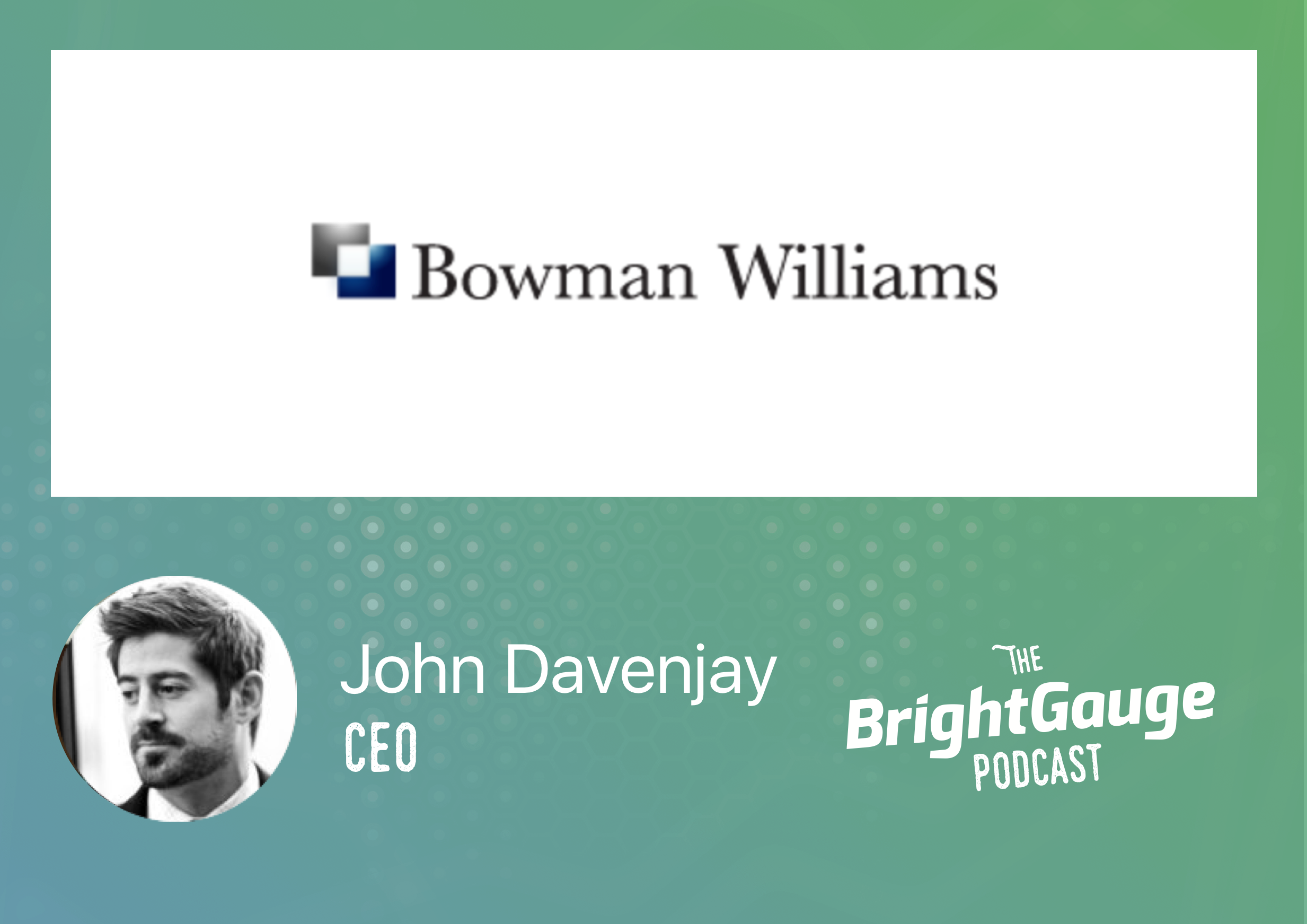For MSPs, there are few metrics more critical to your business success than customer satisfaction (CSAT) scores. We live in a world that demands instant gratification, and clients have high demands ...
For MSPs, there are few metrics more critical to your business success than customer satisfaction (CSAT) scores. We live in a world that demands instant gratification, and clients have high demands for their IT providers. Measuring the satisfaction of your customers provides insight into your operational efficiency, sheds light on your customer’s concerns, and highlights strengths. But, simply collecting CSAT data isn’t enough if you aren’t using it to improve your services. According to a report from Esteban Kolsky, one of the most widely recognized names behind the science of customer experience, 70% of companies that deliver best in class customer service use customer feedback to their advantage. Put another way, improving your organization’s service requires that you work with your clients to evolve your processes and increase communication. We recommend sharing customer satisfaction results directly with the customers themselves. Initially, this might seem to be a bit of a risky choice. Letting your customers see where your service could improve could open their eyes to issues they were unaware of. The other side of the coin is that exposing your customers to what you are doing right can help them to better appreciate your service. There are a few reasons why MSPs should consider sharing their CSAT scores with customers: Open Opportunities for Additional Feedback After collecting customer satisfaction feedback and analyzing the results, the thought of sending that data to your customers might make your heart flutter. But, doing so gives you the opportunity to explore issues with management and work together to find a solution. According to a report from Ruby Newell-Legner, the fan experience expert who advises dozens of professional sports teams and other organizations, the average business only hears from 4% of its dissatisfied customers. While this retail example doesn’t specifically relate to MSPs, it does show that sometimes it can be difficult to convince clients to speak up about issues. No one likes to deliver bad news, especially if they are generally satisfied with their overall service. Allowing your them to see the data might prompt them to be a bit more forthcoming, or dig deeper into specific issues their team has encountered. If you’re reading this and thinking that you always feel the heat from unhappy customers, ask yourself: are there quiet ones who you assume are happy, because you haven’t brought up the conversation? Why risk making that assumption, only to have their business slip away at the end of your contract? The same is true for positive responses as well. When you share CSAT scores with your customers, you open their eyes up to what is going well. Remember that no one is infallible. Management may make assumptions about your service and how their team feels about it. By providing in-depth CSAT research you ensure that their understanding of your service level is accurate. Identify Inconsistencies in Customer Satisfaction MSPs should share CSAT data with a client’s management team so they have an idea of how their staff was treated across the board, as Karl Fulljames, VP of Operations at Nucleus Networks recently explained in a BrightGauge customer poll. Often, the opinions and satisfaction levels in upper management can differ from those in lower level positions. The lower levels are the ones that interface with your team and are more likely to understand the issues that they commonly experience. Even the best-trained MSP teams may unwittingly give better service to clients in upper management. Ultimately the goal of any MSP is to ensure that their client’s IT operations run smoothly and make them a more profitable company. Those goals are often achieved through interactions with lower level support reps. Sharing internal customer satisfaction data will help MSPs work together with clients to create a smoother process for all involved. Display Transparency Clients love transparency from vendors. This is particularly true for MSPs that play a critical role in their operations. Sharing customer satisfaction data with your clients shows that you acknowledge where your service could improve while also highlighting where the relationship has been beneficial. By sharing feedback, you make the client an active presence in the improvement process, which is something they are sure to appreciate. Nick Olerud, Director of Technology at Netrix IT, explains that “transparency makes conversations with clients much easier if there is a bad week or day because they can see the overall trend of good service. It’s easier for clients to understand that mistakes happen and no one is perfect.” Identify & Create Brand Advocates Pinpointing potential brand advocates is important for bringing in referrals. Sharing your CSAT data with clients can be a great way to bring them into the fold. Upper management may not have a firm understanding of your daily interactions with their teams. But because they are the ones in a position to recommend your services, it is important to inform them and build relationships. Sharing your CSAT data can help nurture these relationships and keep your company at the top of their mind. Sharing CSAT data also opens the door to further collaboration. Highlighting issues you've faced and working to correct those issues shows clients that you are responsible and can help to shape their perception of your company. These interactions are a great way to raise their awareness of your company and services. The more aware upper management is of your company, the more likely they are to become a brand advocate and refer other businesses to you. Conclusion Every MSP knows how critical customer satisfaction is to a service-based business. However, too often companies are tight-lipped with results and unwilling to share them with their clients. Instead, try sharing your data with clients and use it as a relationship-building exercise.

Finding and hiring the right people can be be tricky for any company, but this is especially true for MSPs because you need your team to have in-depth technical knowledge. To make it even more challenging, your hires must also be the right fit for your company’s culture. At BrightGauge headquarters, we recently hosted our first Data Driven Workshop where we hosted 15 customers for three days of in-depth learning, peer networking, and best practices sharing. During the workshop, I was able to listen in on the sessions and one of the recurring themes that I noted was on the people side of the MSP business. Every single attendee, no matter the size of their MSP, wanted to trade ideas and try to improve their processes based on the shared experiences of the group. It’s hard to find good people! Period. We sometimes go through the same thing here at BrightGauge, and in reality SMBs across any industry struggle to find qualified applicants for open positions. In fact, a 2015 NFIB report explains that 47% of small businesses find themselves in the same position when it comes to filling open positions. And once you do assemble an awesome team, how do you make sure that you can keep them happy and engaged so that they stay with you instead of pursuing other options? Listening in on these conversations resulted in quite a few takeaways. While finding the right blend of technical skills and personality is difficult, you can master the process with a bit of commitment. Here are 6 ideas you can implement to ensure that your team is filled with motivated talent who are ready to grow your business, as shared by your MSP peers: Offer Internships Internships can be a great way to evaluate new talent and improve relationships with local universities. An internship of 90 or 180 days is typically required in most Bachelor's programs. While most internships are unpaid, it is important that any company that offers them doesn't just view them as cheap labor. Focusing on mentoring and training an intern pays dividends for both parties. Often, internships turn into long-term positions when the intern is a great fit. Interns can also provide a helping hand on projects and tasks that you are struggle to finish. Meanwhile, they're getting their feet wet with real industry experience. Keep a Bench of Potential Hires When filling a position, MSPs who are doing their due diligence should consider plenty of applicants. At times, you’ll likely meet with more than one candidate that you think would be a good fit for the position. Of course, it is only possible to fill the position with one person, but that doesn’t mean that the other applications should be thrown in the trash and the candidates forgotten. According to Harvard Business Review, 33% of new hires look for a new job within their first 6 months. Instead, hold onto those applications to fill future positions or to contact them if your new hire doesn’t work out. Start the Search Early and Take Your Time Sometimes companies will have advance notice of position vacancies or may not need to fill a position immediately. If the need isn't urgent, take the time and conduct interviews over the course of weeks or months. This provides a number of benefits: Evaluate more applicants. With a longer hiring period, you’ll be able to evaluate more applicants. Additionally, the longer time-frame allows you to be more picky about the candidates that you bring in for interviews. Add steps to the evaluation process. With more time, you give yourself the opportunity to meet with a candidate several times while evaluating them. Adding an extra phone interview, in-person interview, or even a working interview can be a great way to get to know each candidate better. Be more picky. When you rush into making a hiring decision, it’s hard to be picky. Are they qualified? Do they have the technical skills? In positions that must be filled quickly, answering those questions may be enough, but slowing down the hiring process allows you to evaluate how they fit within your company culture as well. Work with Local Schools One often overlooked avenue for attracting talented candidates during the hiring process is working directly with local schools to help shape their efforts in preparing students for hire. Reach out to local universities, community colleges, and technical colleges and ask about opportunities to be an Advisor for their curriculum and/or Career Services efforts. Schools are happy to have employer insights and gain a better understanding about what skills local companies are looking for because it helps them to boost their post-graduation employment numbers and attract more students. Additionally, working directly with professors helps to ensure that the candidates being sent your way are the top of their class. Offer Career Development One of the best ways to attract top level talent to any MSP is to offer career development, and it’s an especially solid strategy for smaller MSPs that may not have a lot to offer in the way of internal advancement. Remember that any new hire likely has greater aspirations than the position that you hire them for, whether inside your company or elsewhere. When applicants sense that a position could be a stepping stone to bigger and better things, they are more likely to apply. Although career development for employees can be an expensive investment, committing to a few hours per week can make a position much more attractive. Also note that the career development offered will usually be specific to the position, but sometimes you’ll have employees who are “green” and they’re not sure what they want to do. Help them figure it out, and by getting them on the path to something they are passionate about, you will usually earn their long-term loyalty. Training, certification, or even additional schooling are all excellent options for career development. Challenge and Reward Employees for Excelling Everyone knows that offering promotions and raises are the typical ways to keep employees motivated. But what about small MSPs that don’t have much wiggle room on salary, or are unable to offer promotions? What about employees that aren’t necessarily motivated by money? You’ll have to get creative to find ways to keep employees motivated. In the past, we’ve written about using games, contests, and rewards to improve employee engagement. Here are a few great ways to keep your teams motivated and reward them for exceptional work: Start contests and keep score publicly. All employees want to be rewarded when they do great work relative to their peers. BrightGauge's platform offers custom leaderboards to create and track employee competitions. Give trophies/mementos to employees that embody core company values. Every company talks about the traits that they would like their teams to exhibit. But how many companies actually show gratification when they do? Showing your appreciation for an employee that embodies a core company value can go a long way towards improving motivation, plus your employees will be proud of their accomplishment and want to show off the trophy on their workspace. At BrightGauge, we regularly give out the highly-coveted Top Banana award! Start a customer fantasy league. For MSPs there is no bigger win than helping a client become more profitable. Behind each profitability boost is the tools and employees that made it possible. Give out points to your team members and reward the highest scores for their excellent work! Learn More About Hiring and Retaining Top Talent Hiring and onboarding new employees, and then keeping them motivated long-term has unique challenges in the MSP industry. Learn more expert advice from John Davenjay, CEO of the IT Services staffing firm, Bowman Williams, on The BrightGauge Podcast, Finding and Keeping the Right Employees in an MSP.

Marketing can be a scary thought for plenty of small business owners. And while some people outsource their marketing, there are also plenty of others who want or need to tackle it themselves. If you’re launching a business and trying to manage your upfront costs, how can you possibly roll out a marketing plan? And what tools do you need to do it with? These questions have been top of mind for me lately in a couple of different scenarios. First, I have a couple of close friends who recently launched their own ventures, and they reach out regulary for marketing advice. Then I also get questions from BrightGauge customers from time to time. While we have plenty of large shops partnered with us, we also have numerous small MSPs who are just beginning to think about proactive marketing efforts and don’t really know where to start. If you’re in the latter group, then consider a few of my favorite marketing resources to help you get started. Note: The brands listed here are my personal preferences and tried-and-true resources that I’ve discovered along the way in my marketing journey. BrightGauge and I are in no way benefitting from the sharing of any brands listed below. My favorite free tools to kick off your marketing efforts: (The All-in-One) HubSpot Growth Stack: As the name implies, you get a whole bundle of tools to use with this option. I may be partial, as I use HubSpot every day in my marketing role, but if you know you’re ready to dive in and launch a full marketing program this is it! You’ll get all of their marketing, sales, and CRM tools in one app, and since everyone likes to save time and have less clicking around, that’s a huge benefit here along with everything being really simple to use. From a marketing perspective we’re talking tools to manage your website, blog, email, social publishing, landing pages, SEO, analytics... the list goes on but you can get all the details here. Canva: A bit of graphic design is par for the course with any marketing efforts, whether it’s a blog image, a flyer, a social media post, or any other cause for an eye-catching design. A few years ago, there seemed to be no options in between the childish clip art found in word processing programs and the intimidating, costly, and time consuming Photoshop. So when I stumbled upon Canva, it was really a whole new world of approachable design. They make it incredibly easy to create professional-looking stuff, either by using their templates or you can start from scratch. There are tons of stock photos starting at just $1 (so much cheaper than the big name sites), plus free icons, illustrations, and more. Then if you need to scale up with team level access in the future, you can do so at a very reasonable price. I use Canva to create some of the call to action images you see on our blogs MailChimp: Sending one email at a time just doesn’t cut it when you have a message to share with your loyal community. And the old “BCC” version blanket emails are no better... you can’t even personalize those things! What you need is an email platform to really ramp up your efforts. While there are dozens, if not hundreds, of email platforms out there to choose from, my preference is MailChimp. If you have less than 2,000 subscribers you can take advantage of their free account, although my favorite part about MailChimp is that it’s very user-friendly and simple for creating good looking emails. Some of the other platforms I’ve tried are just plain clunky when it comes to their user interface, and you have to pay for them on top of it! Hootsuite: Posting regularly on multiple social media sites can wear you down pretty fast. That’s where a social management dashboard comes in. Check out Hootsuite (free for up to 3 social accounts), which not only lets you post on multiple social platforms from one central location, but you can also schedule those posts in advance, and see all your analytics in one place. Droplr: Videos are more popular than ever when it comes to marketing. If you’re thinking about trying out some video options, of course you can use your phone for featuring yourself or others, but what about a how-to or instructional video where you want to walk your viewers through something on your computer? Not too long ago, I found myself in this scenario when I had launched a completely revamped version of BrightGauge’s free Resource library. I wanted to walk our community through our Resources with a quick video, and I used Droplr to make that happen: On a side note, we also use Droplr to create those oh-so-famous BrightGauge custom support videos that our community loves so much. Plus, Droplr also makes it easy to take a screenshot and turn it into a shortened URL link when you need to share something quickly. Bonus free resource! Need some tunes to go in the background of your Droplr video? I suggest checking out YouTube’s collection of free, royalty-free music which is a great solution so that you don’t have to cite the artist/composer. Join.me: Webinars are a great way to help educate your audience, one to many. That's why we host one about every month or so at BrightGauge. If you’re going to host webinars sporadically, or want to test the waters before committing to a pricey software, check out Join.me’s free webinar solution for up to 10 attendees. Alexa: SEO is such a complex topic, but getting a hold on your organic reach can yield incredible results! When I first got started at BrightGauge, I used Alexa for some free insights before diving in any further and paying for a tool. With Alexa, you can use their Site Overview to monitor your competitors and also gain some insights about your own site, such as top keywords visitors used to find your site, your ranking power, visitor engagement rates, and more. Google Analytics: When it comes to monitoring your website’s performance and gaining insights on your visitors, Google Analytics is the most widely recognized name. You’ll see which pages have the best or even worst performance, determine where your best visitors are located, uncover your top content, and more. Plus, it’s easy display your Analytics data on your BrightGauge dashboard by downloading the info and then using our Dropbox integration to finish the job. Do you have favorite, free marketing resources to share with the community? Let us know in the comments below.

As an MSP, there are so many data points that you could be tracking in an effort to improve your business and keep your clients happy. After all, we’re all familiar with one version or another of the saying about ‘what gets measured, gets improved’. At the same time, having so much data at your fingertips can be overwhelming. How do you know if you’re tracking the right metrics? Are the metrics you monitor a reflection of accurate data? To help answer these questions and more, we asked Todd McQuilkin, CEO, and Simon Smith, Operations Manager, at Air-IT to join us for a conversation on how to be data driven. As long-time BrightGauge customers, they’ve grown from managing a successful MSP to now also focusing on the consulting side of the business. Join us for a discussion about the data lessons they’ve mastered in their MSP journey. Focusing on the Right Data as an MSP: Episode Highlights An introduction to Air-IT, Todd McQuilkin, and Simon Smith (0:50) Todd’s day-to-day focus as CEO of Air-IT (3:51) How do you position Air-IT when a customer is only looking for a repair instead of a full solution? (8:17) An overview on Air-IT’s consulting and advising for MSPs (10:28) Common, recurring issues that most MSPs are facing (14:58) How are you using BrightGauge at your MSP? Which data do you utilize and how do you make sure it’s accurate? (19:10) Why you must start with data at the company level and work down from there (20:00) How often do you revisit your goals and KPIs? (21:40) Air-IT’s upcoming talk at ITNation Europe on world-class service delivery (23:58) Q&A: Best business book recommendations, resources for professional development, parting advice for MSPs (28:15) How to reach Todd and Simon (32:40) Books/resources as mentioned in the episode: Circle of Safety, Simon Sinek Good to Great: Why Some Companies Make the Leap… And Others Don’t, Jim Collins The Art of War, Sun Tzu (note there are several different translations available) Want to find out more about The BrightGauge Podcast? Check out all the episodes here.

We're excited to welcome Jack Shonkwiler to our growing team as Digital Marketing Specialist! Help us give Jack a warm welcome and learn more about him here: The Early Days Growing up in Central Ohio, Jack lived the quintessential midwest childhood. At the age of nine, he decided his goal was to attend the University of Notre Dame after high school. Ultimately, Jack graduated from Notre Dame in 2008 with a major in Art, Art History & Design. During his final year in South Bend, Jack worked as a Junior Web Designer at the Mendoza College of Business. Designing and building MBA club websites, he was immediately hooked and realized he wanted to marry his passion for design with web marketing. After graduating from Notre Dame, Jack continued to hone his skills by working as a freelance artist and web designer. Several of his medical illustrations were published and he began building a solid list of web design clients. However, Jack wanted to expand his skills beyond graphic and web design. In the summer of 2012, Jack was offered a position in West Palm Beach to develop a new franchise concept. Leaving the cold Ohio weather behind, he and his family relocated to South Florida and began the next chapter. Life in Florida As Brand Manager at United Franchise Group, Jack led the development and launch of the first 15 retail locations of SuperGreen Solutions. Handling everything from brand development to digital marketing, he learned how to work closely with entrepreneurs to help them develop business in different markets around the country. Jack carried this targeted marketing focus to his next position as the Digital Marketing Manager of eBottles, an online bottle distributor. While his time with the company was brief (12 months), he was able to manage aggressive search engine marketing campaigns and increase sales by implementing a cross-sell strategy and abandoned cart campaign. In 2014, Jack accepted an offer to oversee AMG Creative as the Director of Digital Marketing. Managing 15-20 clients around the world, Jack would oversee all marketing channels including corporate websites, print and digital advertising campaigns, mobile application design, and public relations. Joining BrightGauge While finishing his second year at AMG, Jack learned of an opportunity to join the BrightGauge team. Having always aspired to work at a technology company, Jack jumped on the opportunity. As our Digital Marketing Specialist, he will focus on evolving the user experience by bridging the gap between the application and the website. Jack tells us he is looking forward to delivering BrightGauge software to new users all around the world through site automation (HubSpot) and personalization strategy. Beyond the work, Jack is also excited to join the BrightGauge family. The second he entered our office, he was struck by the incredible passion of our team. He knew he would be surrounded with the most talented, genuine individuals at this point in his career (his words, but we agree!). Jack considers this position a great opportunity and hopes to be part of the BrightGauge family for years to come! Personal Life Outside of work, Jack is married to his college sweetheart, Ashley. They have three wonderful children: Brady, Addison, and Bryce. Brady is a natural at golf and is quickly becoming Jack’s outside-the-office obsession. Addison is a talented competitive cheerleader. Bryce is an avid gamer and all around whiz kid. When Jack is not working, he is trying to sneak onto a golf course to get his handicap back to single digits. Often times, he ends up enthralled in his kids’ day-to-day lives which is fine by him.

70+ Metrics for MSPs
Key metrics and accompanying formulas to help MSPs skyrocket growth and success!
Get your KPIs

Companies in any industry know the importance of metrics because they play a large part in both their daily interactions with clients, and analyzing their own effectiveness. However, it is surprising to see how much room many comapnies have to grow in the monitoring of their own financial metrics. They monitor their operations on a daily basis but wait weeks between checking on the overall financial health of the company. BrightGauge’s interactive dashboard is designed to be an all-in-one solution that will eliminate the data silo. Our system integrates directly with the most popular accounting softwares to ensure that our clients always have up-to-date financial metrics on hand to influence key business decisions. Why you need a real-time view of financial data Having a real-time view of your company’s financial metrics puts you in a position to capitalize. In business, it’s commonplace for companies to evaluate financial metrics well after the period that the metrics cover. Some don’t deep-dive into the numbers until the following quarter. Even profit and loss statements may not be evaluated for weeks after a period ends. Now, there isn’t anything wrong with evaluating quarter-to-quarter metrics. Those comparisons yield valuable data and conclusions on their own. Having that big-picture view is extremely useful. But you shouldn’t forego real-time analysis when you have those numbers readily available. Every day you make decisions that will affect the bottom-line of your business. Understanding how small decisions have a measurable impact on your financial metrics is valuable data in itself. While companies shouldn’t be too reactionary, keeping tabs on important metrics as they shift can help businesses to avoid issues that otherwise might take months to notice. By scheduling weekly analysis of your financial metrics, you'll keep your fingers on the pulse of your business. You’ll know what is working and what isn’t well before you dig into your profit and loss statements. Understanding trends in your financial data Like any important business metric, financial data will trend as changes are made. Delaying analysis makes it nearly impossible to catch and correct negative trends before they balloon into serious issues. Keeping a close eye on your financial data can help you to spot trends early and take action to mitigate or continue the trend. At BrightGauge, we’ve included features that make reviewing financial metrics simple for any business. Let’s take a look at an example of what our clients see when they login to their dashboard and sift through their financial metrics: In this example, we are looking at the Total YTD revenue for an example company. Clients are able to customize and filter or sift through the pre-loaded metrics. You won’t have to run time-consuming database crawls or ask your team to generate reports. All vital financial metrics are available directly in your BrightGauge dashboard. You can load up reports with a few mouse clicks and keep an eye on trends as they develop. Retrospective analysis is useful but can be supplemented with a more hands-on approach. Real-time monitoring improves decision-making, while comparing performance monthly can highlight areas of improvement or confirm current strategies are working. Keeping a close eye on these metrics after changes allows businesses to react to the data. This results in a swifter, more beneficial decision-making processes. Cash flow is the lifeblood of any business Cash flow is arguably the most important metric for any business. It provides the stability and flexibility that allows businesses to grow. Having a healthy cash flow allows your company to invest in new projects, prepare for disasters, and capitalize on opportunities. Most business owners know this. Why then, do so many businesses fail in accounts receivable management? According to the Atradius Payment Practices Barometer of 2014, 52% of the value of invoices 90 days past due were written off as uncollectable in North and South America. The average in Europe was 35%. The most important aspect of healthy cash flow is proper accounts receivable management. Having the right processes in place to incentivize clients to pay invoices on time is important. So is ensuring that you are staying on top of overdue accounts. Reps must communicate in a way that encourages quick resolutions. In a BrightGauge financials dashboard, we make it simple for businesses to improve cash flow. Outstanding invoices are spelled out plainly by the company, amount owed, and time past due. Take a look: Having easy access to your Accounts Receivable data helps to ensure that you have a handle on your expected cash flow. This makes investing in assets and making changes less stressful and more informed. Keeping a real-time view of your overdue accounts makes it easy to follow up personally with overdue accounts, a critical step for maintaining positive cash flow and keeping clients from falling behind. BrightGauge integrates directly with several popular financial software solutions to ensure that you always have reliable, real-time financial data on hand. How to empower your business with a single platform At BrightGauge, we believe that connecting operations and financial management in one seamless platform empowers businesses. We’ve gone the extra mile to ensure that our clients are able to connect all of their key business data in one single platform. BrightGauge integrates with the most popular business finance software in use today including QuickBooks, QuickBooks Online, Xero, and Reckon. Learn more about our Financial integrations, including QuickBooks, QuickBooks Online, Xero, and Reckon.

If you’ve been paying attention to the big data revolution the last few years, you are probably eager to launch your own data-based strategies. In the short time since “big data” has come to the forefront, the benefits of leveraging data to make business decisions have been well-documented. According to McKinsey, retailers that leverage data analytics at scale could see their operating margins increase by as much as 60%. That kind of result isn’t limited to retail either, businesses in every industry can benefit from increased data usage. MSPs can use data to monitor response times, examine behaviors, or analyze trends. Data is the most valuable tool that businesses have to aid the decision-making process. Unfortunately, too many underestimate the impact that data could have on their business. As you explore ways to improve data usage and incorporate it into your decision-making, it is important to outline your processes. The inclusion of data in big business decisions will require changes on the part of executives and management. Having an outlined process will streamline changes and help companies make smart decisions. Creating a data-based strategy begins with the definition of a problem. What is it that you would like to see changed within your company? What would the goals of that change be? Simply having a large amount of data on hand doesn’t provide any insight without having it attached to a tangible business goal. Download our free guide on 10 Steps to Implement Data-Driven Decision Making. 1) Analyze your data Once you have identified a problem, you must analyze your data and determine what metrics are most relevant to the issue. For instance, if slow responses to network outages are causing friction with clients, analyzing your mean time to repair would be a good place to start. Make a list of all metrics that apply specifically to the issue that you want to resolve. When choosing the metrics to use for making changes, remember that not all data is valuable. The method used to capture the data determines its usefulness. According to a TDWI report, data quality problems cost U.S. businesses more than $600 million every year. Making large-scale business decisions based on bad data could have catastrophic consequences for any business. 2) Stay focused on areas of importance Businesses collect a lot of data. The business analytics firm McKinsey projects a 40% growth in global data per year. When you have a wealth of data available and are excited about injecting data-based strategies into your business, it can be easy to get caught up in areas that are unimportant to big picture goals. Focus on the core of your business. What are the biggest challenges your company is facing? Identify the biggest areas for improvement within your business and focus on those. Data-based decision making is beneficial, but can incidentally lead some down paths that waste time and resources. 3) Evaluate your results Once you’ve identified a problem and metrics to use in evaluating the effectiveness of your changes, you must decide on a change and see how the data moves after the change is implemented. Business owners must allow the change to take hold for long enough to ensure that the data changes that you see have statistical significance. A few days worth of data is not enough to draw conclusions from. Give your employees time to become used to the changes as well. As their familiarity with the new process grows, your data may change over time. 4) Identify what’s working and what needs improvement When you make a change to your processes, you do so with an idea of the result that you would like to see. However, once a change has been rolled out, there may be unforeseen issues that may not reveal themselves immediately. Evaluate each change in full. Did the data move in the direction that you had hoped? By figuring out what worked when you made the change, you can begin to iterate with new changes and refine your processes. 5) Iterate and implement changes Once you have identified what is working and what isn’t working with your changes, you can then begin the process of iteration. There may always be small issues, but with new small-scale changes, you can reduce their impact. With each new iteration, keep what works and try to find new data-backed solutions for the processes that are having issues. Every iteration gets your business a step closer to a nuanced, data-backed solution to your larger business problem. 6) Work closely with your team Remember that data is only a tool that you have at your disposal. Another tool that you should not take for granted is the feedback from your teams. A data-backed strategy that moves your metrics in the right direction is great but can cause internal issues if the changes are misunderstood. Try to ensure that the process is as transparent as possible. Show them why you are making the change, including the data that helped you to make the decision. By involving your employees in the process, you will receive valuable feedback that helps you to make smart business decisions. Interested in learning more about data-driven decision making? We’ve recently released a new whitepaper that can help any business to inject data-driven decision making into their processes and grow their business. Click here to download 10 Steps to Implement Data-Driven Decision Making.

Finding and retaining the best candidates is a common challenge for any business, and it also happens to be the topic that our customers bring up most often in their conversations with us. There are a ton of resources available on general best practices for hiring and keeping a team engaged, but we wanted to take a closer look at the specifics of the MSP industry. Our conversation with John Davenjay, CEO of the IT Services staffing firm Bowman Williams, highlighted the industry’s current trends and insights as seen from both an employer’s and employee’s perspective. Finding and Keeping the Right Employees in an MSP: Episode Highlights An introduction to John and Bowman Williams (0:50) A closer look at how John helps MSPs plan their hiring pipeline and scale their business (2:49) Hiring trends in the IT Services market: salaries, skillsets, tenure, and more (3:44) The main reason why candidates look to leave an MSP (8:17) How MSPs can help retain their talent: details on culture and avoiding flight risks (11:22) How business owners can start building career tracks to help retain talent (16:04) The need to be nimble in small companies with limited advancement opportunity (18:02) Combating the fear of recruiter cost vs. companies who spend tons of time searching for a candidate alone (19:30) The ideal customer for Bowman Williams in the MSP recruiting space (22:47) Q&A: Favorite business book, best personal improvement resource, parting advice about recruiting, how to reach John (25:29) Book mentioned in the episode: Good to Great: Why Some Companies Make the Leap… And Others Don’t, by Jim Collins Want to find out more about The BrightGauge Podcast? Check out all the episodes here.

Did you know that employees believe 30-50% of their peers lack accountability, according to a study from the American Management Association? Of course, accountability can refer to a number of different traits. Are they socially accountable, and willing to admit a social faux pas? Are they accountable in their performance and effectiveness? Are they accountable to their team and collaborators? Do they appropriately prioritize their tasks and inform stakeholders of changes? In truth, accountability is all of the above and more. To inject accountability into a team that is lacking it requires a concerted effort from the top of an organization. To encourage accountability, employees must have a clear definition of the standard that they are being held to. Defining clear and realistic goals is crucial. Accountability is driven by company culture and that culture comes from the top down. Goal-setting is the most critical component for fostering an environment that encourages accountability. Learn the right way to set and track goals, establish a cadence, and drive your organization forward using accountability. Setting Goal Scope and Creating Shared Purpose Accountability is driven and facilitated by the culture within an organization. The policies that shape that culture must be expected of all employees, from the owner down to new hires that are just learning the ropes. Successful teams must embrace accountability as individuals and groups, but organizations must also be accountable as a whole. Accountability works its way into company culture when teams are willing to take ownership of their objectives, not because they have to, but because they want to. When they are unsuccessful, those same individuals should be willing to take ownership of their failures. Passing the buck and making excuses leads to resentment and ultimately works against an accountable workplace. Accountability doesn’t come from strict rules and discipline. It comes from an open environment where stakeholders aren’t afraid to contribute. The goals that you set within your company should encompass all levels of work and collaboration: Organizational goals. Goals that encompass the company or organization as a whole. Organizational goals are the driving force behind shaping all other goals. Team goals. Goals for departments, teams, and collaborations. These goals should help dictate the individual goals employees set for themselves. Individual Goals. Individual goals help advance careers while progressing toward a company's larger objectives. These goals should build toward both team and organization goals. Creating a shared purpose for teams ensures that no large goals fall squarely on the shoulders of one person. Instead, those successes and failures fall on the company as a whole. According to Partners in Leadership’s Workplace Accountability Study, 85% of those surveyed were not sure what their organization was trying to achieve. This kind of disconnect actively works against accountability in the workplace. Clearly defining the organization’s goals and connecting them to smaller team goals provides clear insight into company direction and motives. Every employee should have clarity on the importance of specific goals to see the bigger picture. Setting Effective Long and Short-Term Goals When setting goals, each type should include both short-term and long-term goals. Long-term goals are completed after successfully completing a series of short-term goals. One goal should build to the next, one step at a time toward a larger company vision. Although long-term goals mark the finish line, short-term goals play the largest role in daily accountability. Fast, sustained completion of goals provides consistent rewards. To set realistic goals, those goals should be tied to specific business metrics that set a clear line for success. These metrics, known as key performance indicators (KPIs) may include metrics like revenue, sales figures, or job-specific metrics such as first call resolution rate and cost per incident. Accountability is a Two-Way Street According to the Workplace Accountability Study by Partners in Leadership, 80% of respondents surveyed said that feedback was only provided when something went wrong with a project. This sends the wrong signal to employees, who begin to see feedback as a negative development. A step where feedback is given should be a part of any project, regardless of the outcome. That feedback shouldn’t just focus on negatives, but highlight the positives as well. This promotes a culture of accountability for both the good and bad and lets employees know they are appreciated. Next Steps for Improving Accountability Accountability matters, but is not easy to achieve in large companies. It starts from the top down, from organizational goals through helping employees define their own. Performance accountability is achievable when employees have clear initiatives, but too often organizational accountability is misunderstood and confused with discipline. This does more harm than good. As you make changes to facilitate more accountability within your company, remember to take things one step at a time. You can’t make an unaccountable workforce change their stripes overnight, but you can make progress overtime with a game plan and consistency. Are you ready to take the next step in setting up a culture of accountability in your company? Learn more about the right way to set and track goals, establish a cadence, and drive your organization forward using accountability.

IT Security in today’s world is no longer a basic blocking and tackling approach mixed in with a bit of antivirus protection. And as the state of security continues to evolve rapidly, it’s hard to keep up with all of the threats that businesses face. We recently sat down with Javier Sola, Cyber Security Director at Compuquip, and asked him to share some insights on how you should be thinking about security, how to educate your customers on security, and updates on some of the recent topics associated with security threats. The State of Today's IT Security: Episode Highlights Javier’s intro and background (0:49) How to approach helping a new customer with their network (4:20) How should SMBs be looking at their security? (6:43) Where to start with security for companies with a limited budget (8:58) Hot topics right now in security: next generation firewalls, zero day threats, sandboxing, network access control and data loss prevention (10:11) How would you start to educate a new customer on IT security if they’ve never thought about this topic before? (15:58) Why you should have an expert partner to rely on for different security domains (19:15) Advice to engineers on assessing perimeter database applications (20:54) Is it more or less difficult to secure cloud applications as compared to an on-premise infrastructure? (23:23) Resources for learning more about security (24:57) Parting advice for companies getting started with security, and how to reach Javier (28:56) Want to find out more about The BrightGauge Podcast? Check out all the episodes here.

In roughly 10 years, Datto has grown from being one of many names in a sea of backup solution providers to one of the headlining names of the IT Services industry. We recently invited Datto’s VP of Business Development, Rob Rae, to join us for a conversation on achieving incredible growth in a commoditized industry. The insights Rob shared carried the conversation from brand messaging to customer education, partnering with the right solution providers, common themes in the ITSP industry, and more. Achieving Incredible Growth in a Commoditized Industry: Episode Highlights Rob’s introduction and background (0:48) How Datto has accomplished incredible growth in a short time, in a commoditized industry (6:31) Networking continuity and the acquisition of Open Mesh networking technologies (11:33) How is Datto’s messaging changing with the addition of cloud, appliances, and more? (14:14) The “sweet spot”, or typical solution provider partnering with Datto (18:18) When MSPs come to Datto, is it because they need to solve a problem for an end user, or because Datto is a brand focused on education? (23:01) Why ransomware solutions have been a significant win for Datto (24:29) How do MSPs make money with Datto? (27:48) Simple fixes for improving business: a common theme among the community (33:34) Datto’s trajectory and focus for the next 6-12-18 months (38:52) Q&A: Best business book, favorite personal improvement resource, parting advice for MSPs, how to reach Rob (42:41) Books as referenced by Rob: Anything by Malcolm Gladwell and also his Revisionist History podcast Crossing the Chasm: Marketing and Selling High-Tech Products to Mainstream Customers by Geoffrey Moore The Go-Giver: A Little Story About a Powerful Business Idea by Bob Burg and John David Mann Resources referenced by Rob: ChannelE2E.com Want to find out more about The BrightGauge Podcast? Check out all the episodes here.












